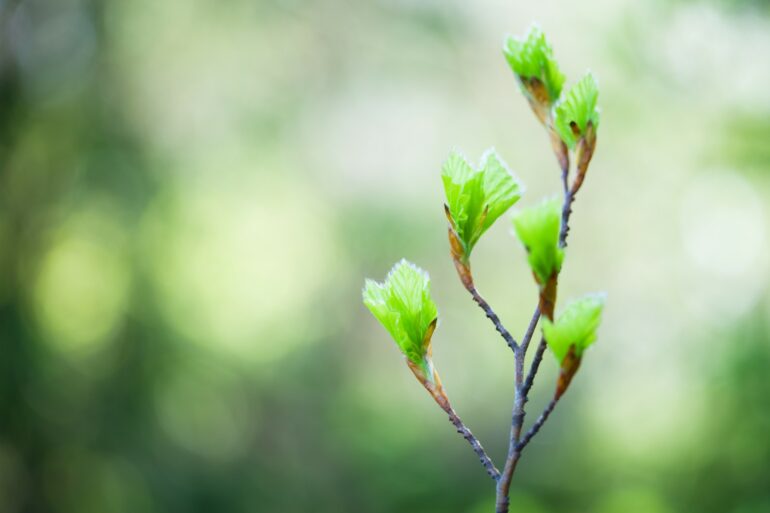A drop in the total number of rainy days each year is contributing to an earlier arrival of spring for plants in northern climates, a new study finds.
Scientists have known that warmer temperatures due to climate change have led to the first leaves coming out at earlier dates in recent decades.
But this study shows that fewer rainy days plays the second largest role in this early leaf-out, said Desheng Liu, co-author of the study and professor of geography at The Ohio State University.
“Scientists have looked mainly at how temperature affects when leaves first appear and, if they considered precipitation at all, it was just the total amount,” Liu said.
“But it isn’t the total amount of precipitation that matters the most—it is how often it rains.”
In the new study, published recently in the journal Nature Climate Change, the researchers calculated that the decline in rainfall frequency will lead to spring arriving an additional one to two days earlier each decade through 2100 compared to what scientists previously thought.
“We should expect an even earlier spring in the future compared to what current models tell us,” said study co-author Jian Wang, a doctoral student in geography at Ohio State.
The researchers analyzed data sets from the United States, Europe and China (all north of 30 degrees latitude, which includes most of the United States). The data included the dates each year when observers noted the first evidence of leaves. They also used satellite images from 1982 to 2018, which recorded when vegetation started to green.
They compared that with data on how many rainy days there were each month at the sites studied.
Results showed that as rainy days declined over the years, spring arrived earlier for most of the areas in the Northern Hemisphere. The one exception was grasslands mostly located in semi-arid regions, where fewer rainy days delayed spring slightly.
Why do fewer rainy days lead to earlier arrival of spring? There are two main reasons, according to the study.
One is that rainy days are also cloudy days. Fewer rainy days in late winter and early spring means that trees and other plants are receiving more solar radiation earlier in the year, which stimulates leaf growth.
Fewer days with clouds also means daytime temperatures will be higher with more sunlight heating the ground and atmosphere. Nighttime temperatures will cool more rapidly without clouds to trap the heat.
“This contrasting effect earlier in the year makes the plants think it is spring and start leaf onset earlier and earlier,” Wang said.
The researchers used their findings to create a model estimating how much sooner spring would arrive now through 2100. Current models already suggest that spring for plants will arrive about five to 10 days earlier for most of these northern climates by the end of the century, Liu said.
But by taking the decline in rainy days into account, the researchers’ new model suggests spring will arrive another day to two earlier than expected each decade.
“We need to plan for a future where spring arrives earlier than we expected. Our model gives us information to prepare,” Liu said.
Other co-authors were Philippe Ciais of Laboratoire des Sciences du Climat et de l’Environnement in France, and Josep Peñuelas of the Centre for Research on Ecology and Forestry Applications in Spain.
More information:
Jian Wang et al, Decreasing rainfall frequency contributes to earlier leaf onset in northern ecosystems, Nature Climate Change (2022). DOI: 10.1038/s41558-022-01285-w
Provided by
The Ohio State University
Citation:
Fewer rainy days leading to earlier spring in northern climes (2022, February 17)
